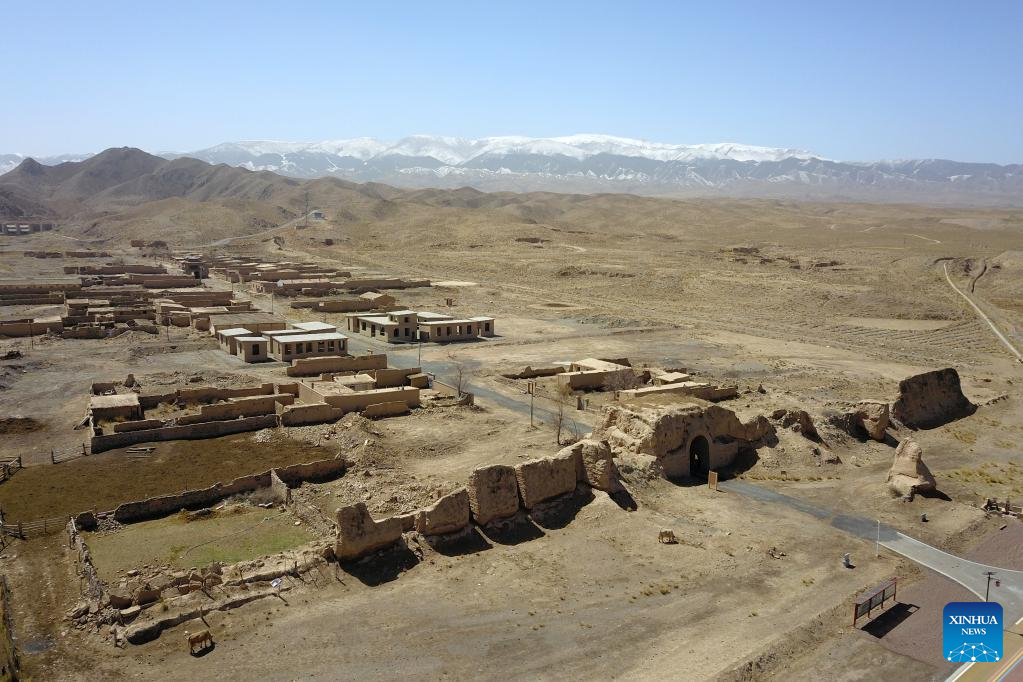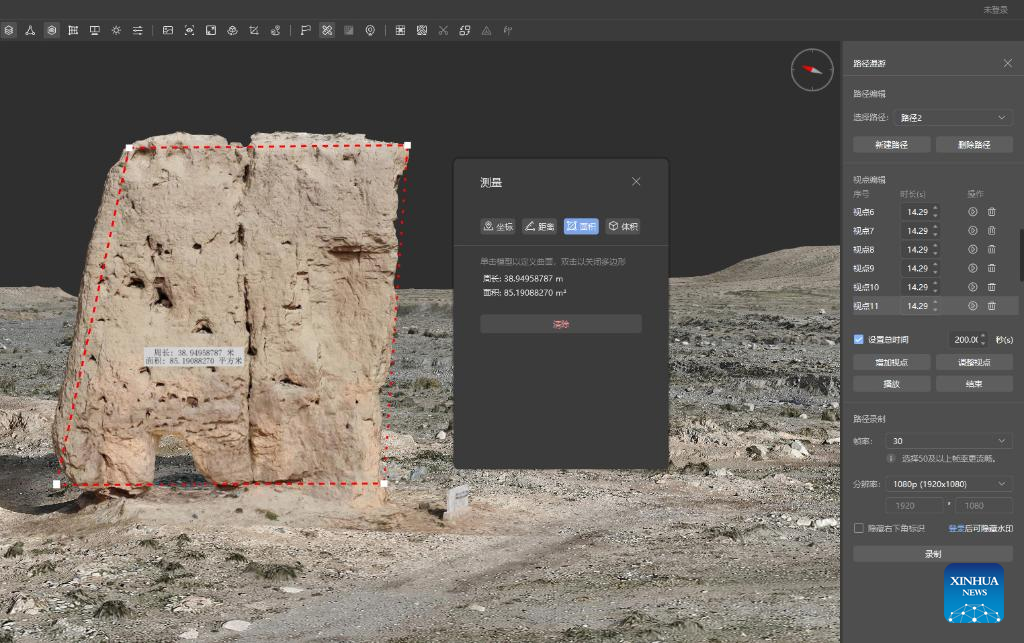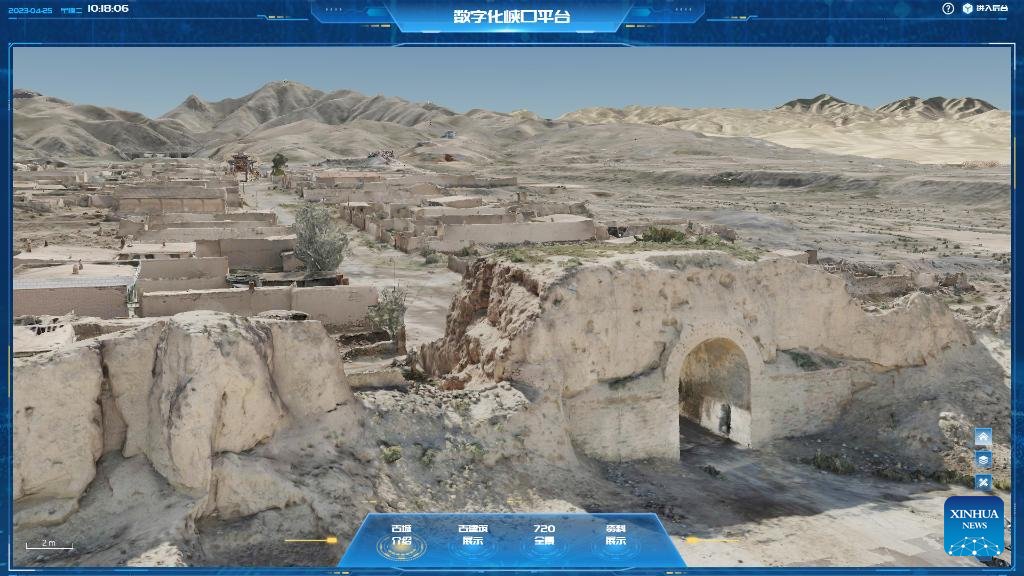
This aerial photo taken on April 25, 2023 shows the ancient city of Xiakou in Shandan County, northwest China's Gansu Province.(Xinhua/Fan Peishen)
LANZHOU, April 28 (Xinhua) -- Authorities in northwest China's Gansu Province recently completed the building of a three-dimensional database to digitally map the Great Wall in order to ensure better protection.
The database contains all the information collected through unmanned aerial vehicle (UAV) field scans and air remote sensing technology and generates millimeter-level high-precision 3D images of several sections of the Great Wall in Shandan County in Zhangye City, according to Bai Yuzhang, a staff member of the Shandan cultural relic protection bureau.
The Great Wall sections in Gansu stretch 3,654 km. Over the past few years, the Gansu provincial cultural heritage bureau has implemented over 30 protection projects, utilizing digital technology as a new approach.
The Shandan section of the Great Wall stretches over 200 km, which was mostly built from the Han Dynasty (202 BC-220 AD) to the Ming Dynasty (1368-1644) and is considered well-preserved. The existing sections in Xiakou Village are the main components.
"The Great Wall in Xiakou has suffered from serious weathering erosion over an extended period of time. As a result, it now appears to have peeling, porosity, cracking, and other issues," said Bai, adding that other relics, such as ancient street buildings and beacon towers, have also suffered damage of varying degrees.
During the past two years, the local government has carried out several projects to restore the Xiakou section and started the digitalization project in 2021.
The technical team used UAV photography and remote sensing mapping technologies to take photos of the Great Wall and the surroundings, covering an area of about 25 square km, and generated panoramic 3D models based on data analysis.
These digital technologies can collect accurate data in a short period of time, said Lin Haitao, who works with the project's technical team.
The 3D models precisely reflect the textures on the surface of the wall with a resolution of up to two millimeters, Lin added.
After more than a year of data collection and analysis, the database has been completed and the system is in the trial run stage and preparing for final acceptance.
"The advantage of digitalization is that it can break the limitations of time and space so that users have enough access to understand the rich historical and cultural connotations of the resources," Bai said.
"The database is not only precious historical materials of cultural relics, but also the foundation for future research, protection, and application of the Great Wall heritage," he added.
This project is among the first batch of digital protection projects of the Great Wall in Gansu, providing a new approach for heritage protection and research, said Zhang Li, a tourism official from Shandan County.
"Advanced digital technology helps us protect, discover, and explore the splendid cultural treasures left by ancient people. We plan to research and develop various digital products of the Great Wall in the future," he added. ■

This photo taken on April 25, 2023 shows the ancient city of Xiakou in Shandan County, northwest China's Gansu Province.
(Xinhua/Fan Peishen)

This screenshot shows a three-dimensional database of the ancient city of Xiakou in Shandan County, northwest China's Gansu Province.
(Xinhua)

This screenshot shows a three-dimensional database of the ancient city of Xiakou in Shandan County, northwest China's Gansu Province.
(Xinhua)

Staff members research on the ancient city of Xiakou via a three-dimensional database in the Shandan cultural relic protection bureau in Shandan County, northwest China's Gansu Province, April 25, 2023.
(Xinhua/Fan Peishen)



